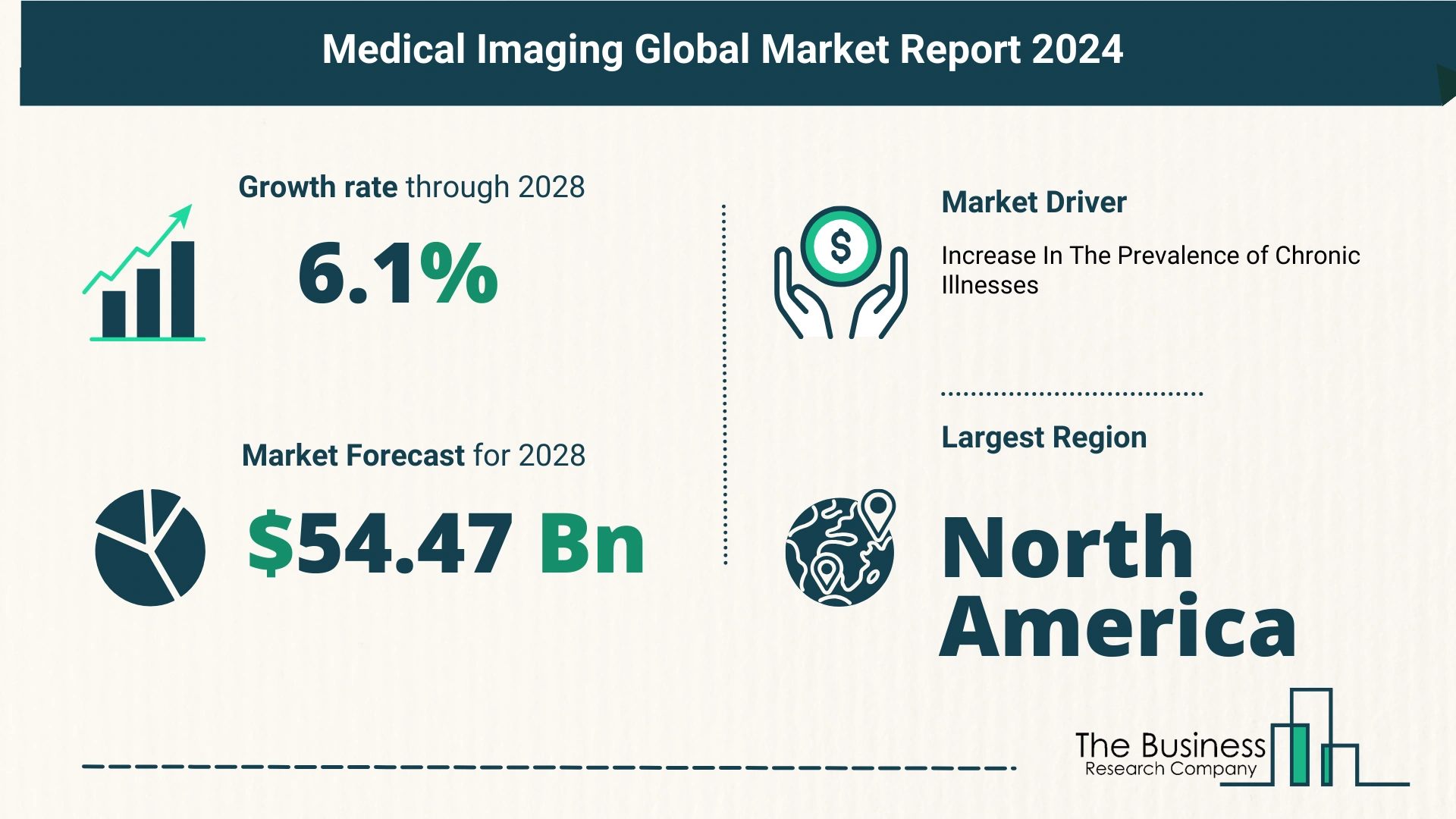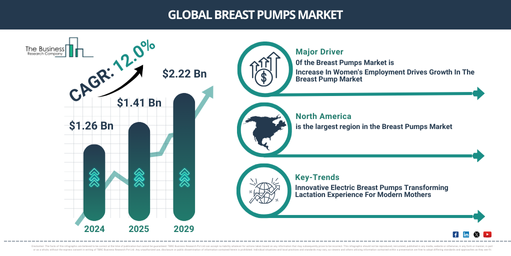Key Takeaways From The Global Medical Imaging Market Forecast 2024
The Business Research Company’s global market reports are now updated with the latest market sizing information for the year 2024 and forecasted to 2033
As per The Business Research Company’s Medical Imaging Global Market Report 2024, the medical imaging market is expected to show significant growth in the forecast period.
The medical imaging market has witnessed robust growth over recent years, and projections indicate that this trend is set to continue. In this blog, we will explore the factors driving this growth, the key trends shaping the market, and what the future holds for medical imaging.
Market Growth Overview
- Recent Growth: From $40.35 billion in 2023 to $42.96 billion in 2024, growing at a CAGR of 6.5%.
- Future Projections: Expected to reach $54.47 billion by 2028, with a CAGR of 6.1%.
Key Drivers of Growth
Rising Prevalence of Chronic Illnesses
- Definition: Chronic illnesses last for three months or more and typically worsen over time.
- Impact on Market: Increased need for diagnostic tools boosts the medical imaging market.
- Statistics:
- In 2021, 78.6% of Australians had at least one long-term health issue; 46.6% had at least one chronic illness.
- Annually, around 4.1 million deaths are related to chronic respiratory diseases globally.
Aging Population
- Demographics: Older populations are more prone to chronic diseases, necessitating more medical imaging.
- Healthcare Needs: Increased healthcare services and early diagnosis enhance market growth.
View More On The Medical Imaging Market Report 2024 – https://www.thebusinessresearchcompany.com/report/medical-imaging-global-market-report
Government Initiatives and Investments
- Healthcare Funding: Governments investing in healthcare infrastructure and advanced medical technologies.
- Programs: Initiatives to improve early diagnosis and treatment capabilities.
Increasing Awareness and Early Diagnosis
- Public Awareness: More people are now aware of the benefits of early diagnosis.
- Medical Check-ups: Regular screenings and check-ups drive the demand for imaging technologies.
Rise in Minimally Invasive Procedures
- Procedures: Growth in minimally invasive procedures relies heavily on imaging technologies.
- Benefits: Reduced recovery times and better patient outcomes.
Future Growth Factors
Personalized Medicine Approaches
- Tailored Treatments: Personalized medicine requires precise imaging for customized treatment plans.
- Impact: Drives demand for advanced and specific imaging modalities.
Emerging Modalities and Hybrid Imaging
- Innovations: New imaging technologies and hybrid systems improve diagnostic accuracy.
- Growth: These innovations cater to complex medical conditions, enhancing market growth.
Global Health Challenges and Preparedness
- Pandemics and Outbreaks: Increased need for medical imaging in global health crises.
- Preparedness: Imaging plays a crucial role in diagnosing and managing diseases.
Integration with Electronic Health Records (EHRs)
- Data Integration: Seamless integration of imaging results with EHRs improves healthcare delivery.
- Efficiency: Enhances the efficiency of diagnosis and treatment processes.
Patient-Centric Care and Experience
- Focus: Emphasis on improving patient experience through better diagnostic tools.
- Outcome: Higher patient satisfaction and better healthcare outcomes.
Major Trends in Medical Imaging
Telemedicine and Remote Imaging
- Remote Access: Growth in telemedicine includes remote imaging services.
- Accessibility: Provides access to imaging in remote and underserved areas.
AI Integration
- Artificial Intelligence: AI enhances image analysis, improving diagnostic accuracy and efficiency.
- Innovations: AI-driven tools and software are becoming integral to imaging systems.
Technological Advancements
- 3D and 4D Imaging: Improved imaging techniques provide better visualization and diagnostic capabilities.
- Portable Devices: Increasing use of portable and point-of-care imaging devices.
Leading Companies in the Market
- Major Players: Hitachi Medical Corporation, General Electric Company, Medtronic PLC, Siemens Healthcare GmbH, Fujifilm Holdings Corporation, Koninklijke Philips N.V., and more.
- Innovations: Companies are focusing on developing innovative technologies to maintain market leadership.
Notable Acquisition
- Philips and BioTelemetry Inc.: In February 2021, Philips acquired BioTelemetry to enhance its cardiac care portfolio and integrate solutions across the health continuum.
Market Segmentation
- By Product: X-Ray Devices, MRI, Ultrasound, CT, Nuclear Imaging, Mammography.
- By Application: Obstetrics and Gynecology, Orthopedics, Neuro and Spine, Cardiovascular, General Imaging, Oncology, Urology, Breast Health.
- By End User: Hospitals, Specialty Clinics, Diagnostic Imaging Centers.
Regional Insights
- North America: Largest market in 2023.
- Asia-Pacific: Expected to be the fastest-growing region during the forecast period.
Conclusion
The medical imaging market is poised for significant growth, driven by technological advancements, an aging population, and increasing prevalence of chronic diseases. With ongoing innovations and strategic investments, the future of medical imaging looks promising, promising better healthcare outcomes and improved patient experiences globally.
Request A Sample Of The Global Medical Imaging Market Report 2024:
https://www.thebusinessresearchcompany.com/sample_request?id=10141&type=smp


